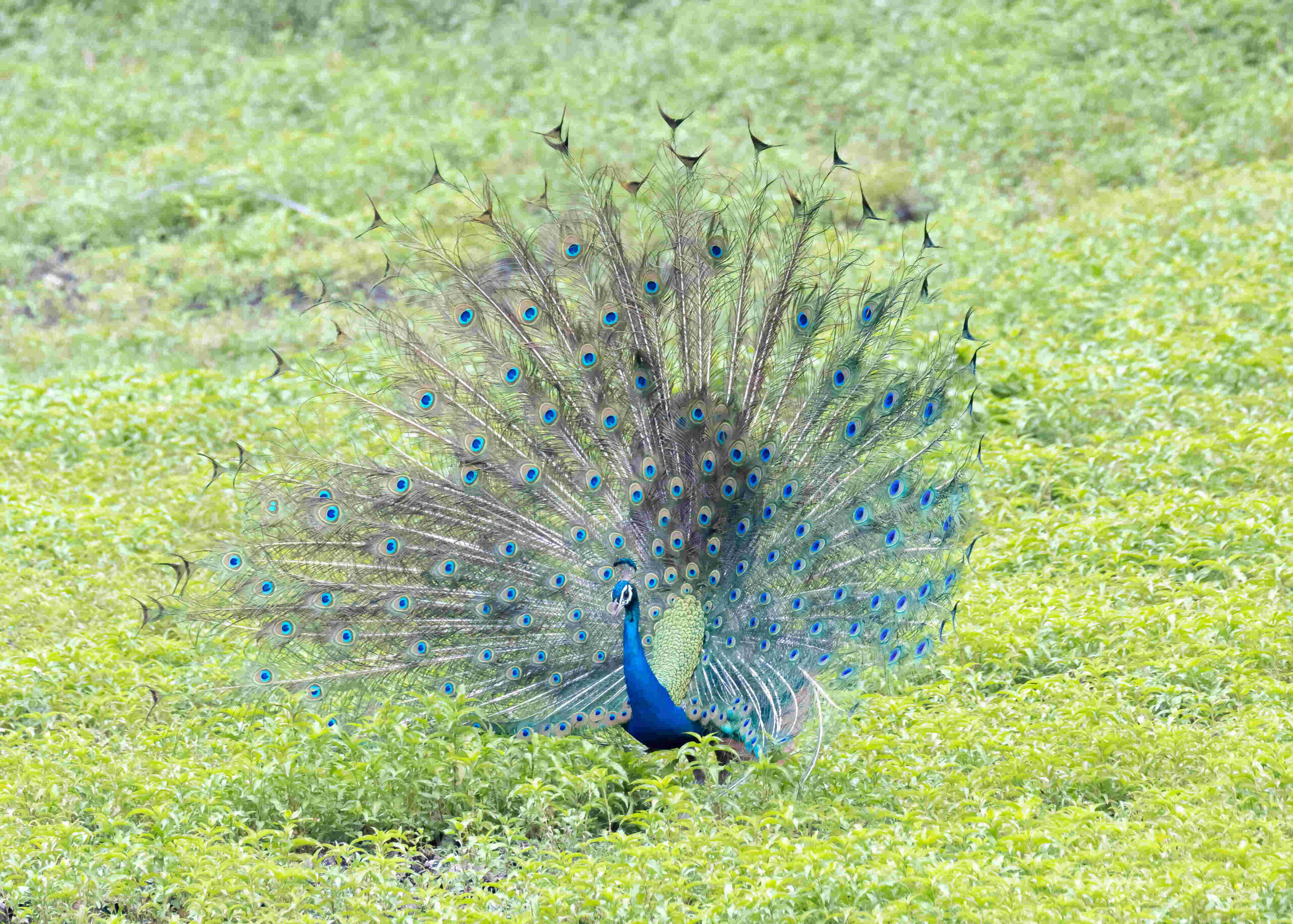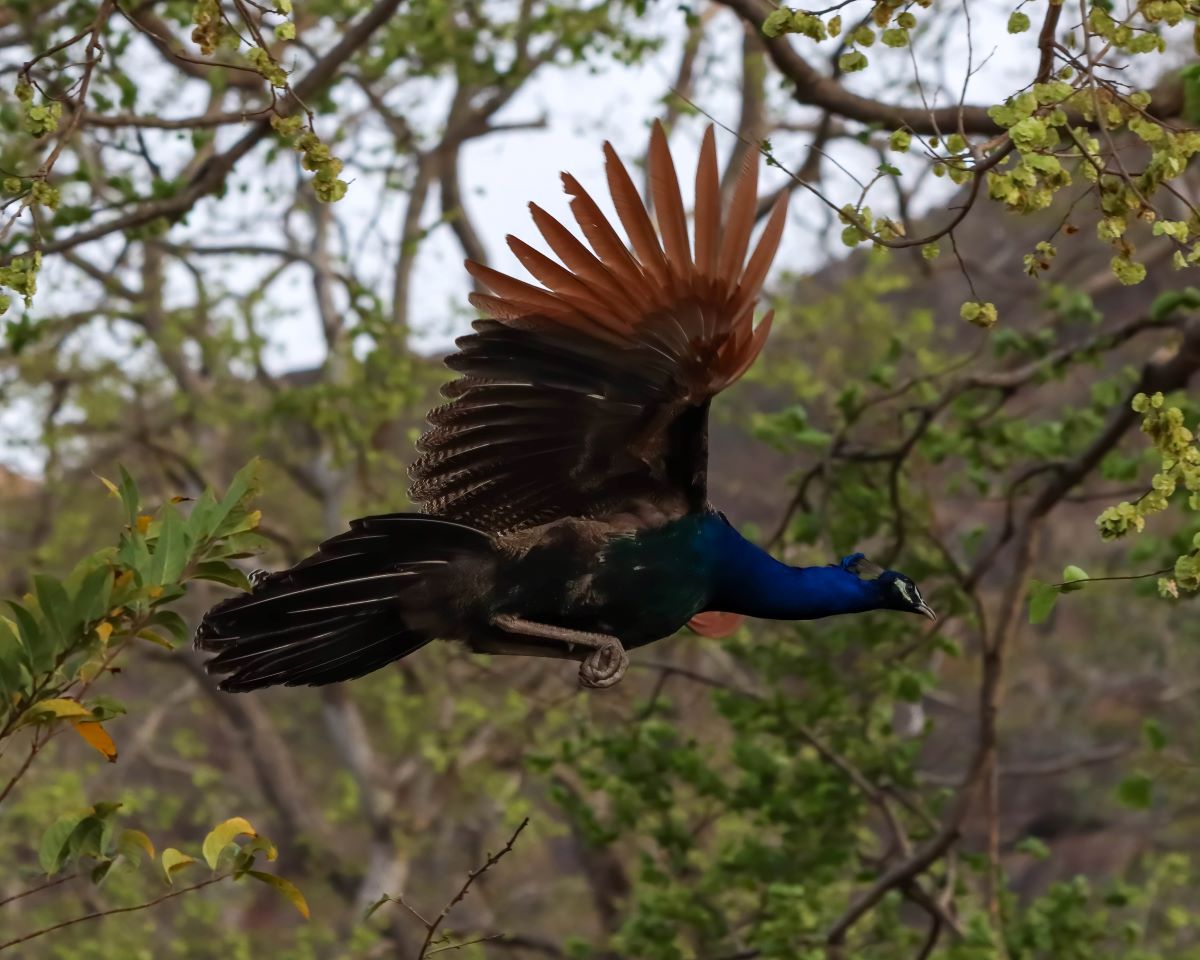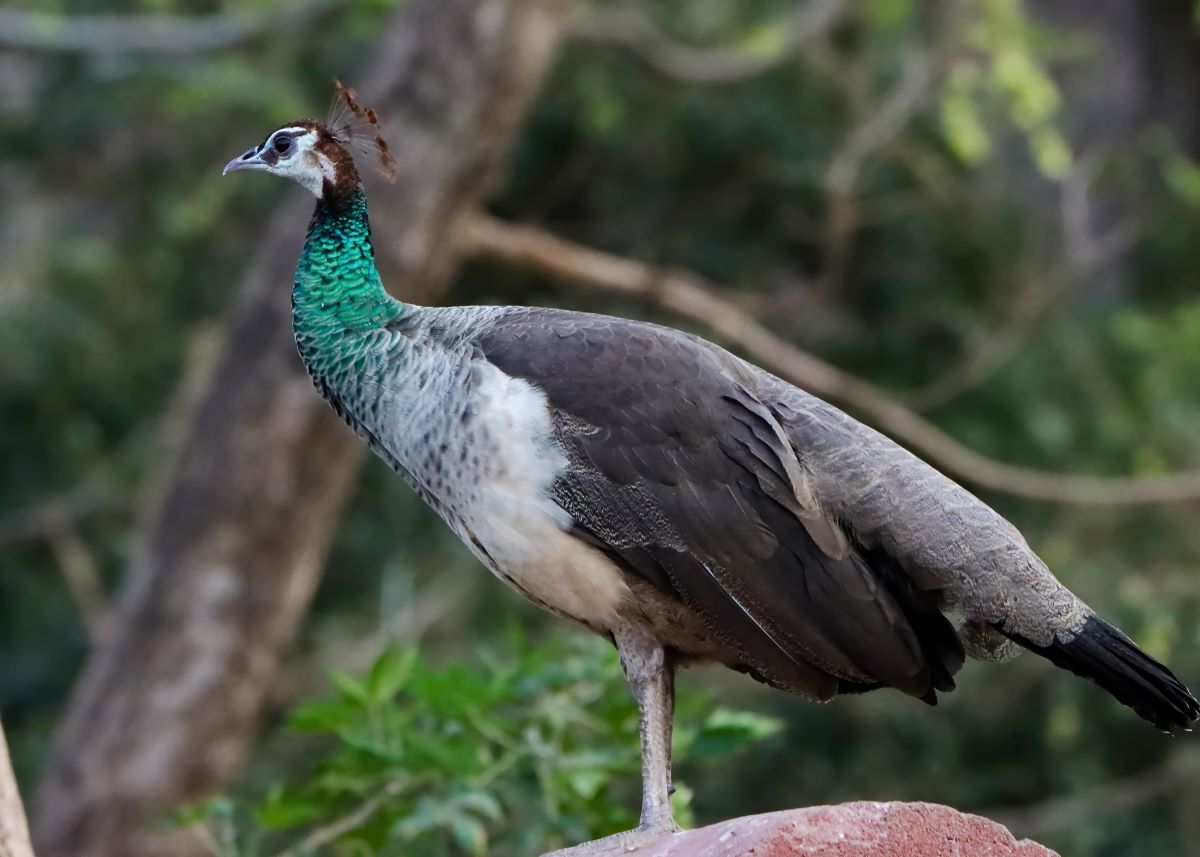The Indian Peafowl (Pavo cristatus), also known as the Common Peafowl, is a large and colourful bird native to the Indian subcontinent. This is the National Bird of India. The male bird is brighter in colour with vibrant blue and green colour and a prominent crest. The male bird spreads its large blue tail during courtship display to attract the female. The female is comparatively dull with brown plumage and a green neck.

Physical characteristics of Indian Peafowl
The Indian Peafowl is a large bird with an average length of 37.4-45.3 inches and weighing between 2.7-6 kgs. The wingspan of this massive bird is 31.5-63 inches. Its average lifespan is 15 years in the wild. But in captivity this bird lives up to 23 years. This bird has an average flying speed of 16 km/h. The female birds are slightly smaller in size than their male counterparts. The size, colour and shape of the crest of this bird make it unmistakable in their native distribution range. This is mainly a ground dwelling bird. But it can take short flights mainly to escape from predators.

Habitat & Distribution
The Indian Peafowl is a native bird to Indian subcontinent. This is commonly found in entire India. But it is also found in Pakistan, Sri Lanka and parts of Nepal and Bhutan. In recent times, this bird has been introduced to many countries like the United States, United Kingdom, Mexico, Honduras, Costa Rica, Colombia, Guyana, Suriname, Brazil, Uruguay, Argentina, Spain, South Africa, Portugal, Greece, Italy, Madagascar, Mauritius etc. In most of the places they are kept as pet or in zoos and farms. This bird is found in varieties of habitats including grasslands, scrublands and forests.
Diet & Behaviour
The Indian Peafowl is an omnivorous bird. Their diet consists of various seeds, insects (including termites), small mammals, worms, reptiles and crops. They also feed on tree and flower buds, petals, grains and grass and bamboo shoots. Around human habitations, they even feed on food scraps and human excreta.
During breeding season, the males display their tail feathers in an elaborate courtship display to attract the females. They spread their tail feathers out into a fan shape and shake them while making a loud and distinctive call.
Conservation status
The Indian Peafowl is listed as a Least Concern species in the Red List published by the International Union for Conservation of Nature (IUCN). That means this bird is presently not considered to be at risk of extinction. However, rapid habitat loss, hunting and captivating as pet are some major threats to this species.

Threat in the wild
The main predators of the Indian Peafowl in the wild are the animals like Leopard, Golden Jackal and Tigers. However, except the Leopard, the other animals can hardly ambush on this bird. Because this bird can fly and take shelter on a tree while such a predator attacks them. Apart from the animals, some large raptors like Changeable Hawk Eagle also attacks this bird. Big-sized owls, like the Rock Eagle Owl are also seen predating this beautiful bird in the wild.
The chicks are more prone to predation than the adult birds. Moreover, birds living around the human habitations are frequently attacked by domestic dogs. In some places this bird is hunted by human for some folk remedies involving “peacock oil”.
Conclusion
The Indian Peafowl is a beautiful bird which is known for its stunning look and elaborate courtship display. Although this bird is currently not considered to be at risk, its conservation measures are still necessary for its continuous survival in the wild. It is high time to protect their habitats in order to save this beauty for the generations to come. Survival of each and every species is very much necessary for maintaining a balanced and healthy ecosystem.